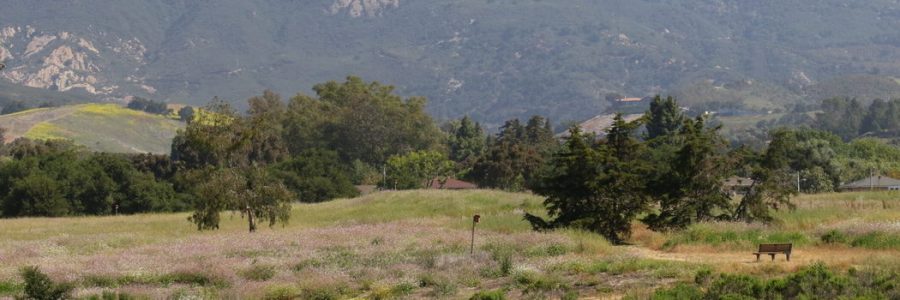
In 2010, UCSB introduced its Long Range Development Plan (LRDP) calling for a 25% increase in student population as well as significant increases in faculty and staff. The plan also doubles the academic space on campus. A coalition of community groups (including SBAS) formed to respond to UCSB’s plan. Negotiations between the Sustainable University Now (SUN) coalition and UCSB resulted in a revised and more environmentally sensitive plan.
Sustainable University Now (SUN) Advocacy Yields an Improved 2010 UCSB Long Range Development Plan
by George Relles & Darlene Chirman, 2 of the 4-member SUN Negotiating Team
In 2010, UCSB introduced its Long Range Development Plan (LRDP) proposal, with a planning horizon to 2025. The LRDP called for raising its 20,000 student cap by adding 5,000 more students, many of them graduate students. It also proposed to add 1,400 staff and 300 faculty. In addition, the plan would add 2.2 million square feet of building space, which would nearly double the academic space on the existing campus.
The LRDP would mitigate the traffic impacts through several measures:
– provide housing for newly added students, staff and faculty and their families on UCSB’s campus, to reduce commuting traffic impacts,
– expand and improve bike paths on Campus,
– sign a joint agreement with The City of Goleta and SB County to provide some traffic mitigation funding; additional financial mitigations would be required if designated limits were exceeded.
Sustainable University Now (SUN) is a coalition of community groups formed to deal with impacts not adequately covered by Goleta’s and SB County’s agreement. After much negotiation, in March of 2011 a legally binding SUN/UCSB Agreement was signed. Signatories for SUN included:
- Citizens Planning Association of Santa Barbara County (CPA);
- Coalition for Sustainable Transportation (COAST);
- League of Women Voters, Santa Barbara Chapter;
- Santa Barbara County Action Network (SBCAN);
- SBCAN Action Fund (SBCANAF);
- Santa Barbara Audubon Society.
The SUN Agreement was woven into the LRDP and approved by the California Coastal Commission (CCC). Together they provide:
1. TRANSPORTATION: Specific reductions through 2025 in the amount of on-campus parking; including elimination of plans for at least one major parking structure and denying daytime, on-campus parking permits to staff and faculty living in on-campus housing.
2. HOUSING: Commitment to develop on-campus housing to meet demand from existing as well as newly hired staff and faculty.
3. WATER: Increased UCSB conservation efforts and agreement that UCSB would conduct a separate EIR on water if a forthcoming Goleta Water District (GWD) Strategic Supply study projected less water than the amount UCSB’s EIR projected. (The previous GWD study concluded a 1,000 acre ft./year shortfall.)
With each development approved within the 2010 LRDP but not yet built and that requires a water supply, water availability will be evaluated in the environmental review process. Water conservation efforts will be the primary means of providing the additional needed water supply.
4. BIOLOGY: Implemented buffers of 100’-300′ from all Environmentally Sensitive Habitat Areas (ESHA). Coastal salt marsh–Devereux Slough will have 300-foot buffers, as will raptor ESHA in Eucalyptus woodlands; 200-foot buffers will be for brackish water. Fresh water and riparian EHSA will have 100-foot buffers. Limited exceptions allow existing reduced buffers to be retained.
Development adjacent to ESHA will trigger restoration or enhancement of that ESHA. ESHA restoration will use native plant species of local genetic stock.
UCSB will develop an Open Space Management Plan including a Campus Habitat Restoration Map and restoration goals to guide restoration activities. The Plan must be approved by the CCC.
The Plan will require full restoration of North Campus Open Space (former Ocean Meadows Golf Course) to offset impacts of intensified development associated with buildout of LRDP 2010. However, such restoration cannot be used to mitigate adverse impacts of any individual project; no funding mechanism provided for this restoration
The Slough Road will be converted to a pedestrian/bicycle corridor when the Devereux campus is developed.
Commitment of UCSB to work with local agencies to restore tidal circulation to Goleta Slough.
The University shall develop a comprehensive surface water quality monitoring program for all discharges from campus that are unhealthful or unsafe for human contact.
Bird safe buildings: window glazing will be of bird-safe design in new or renovated buildings.
5. ENERGY: UCSB shall continue to reduce energy consumption in compliance with Title 24 and AB 32 regulations, and in accordance with stricter standards in the UCSB Sustainability Plan and UC system-wide Sustainability Policies. The campus will monitor and reduce energy use on a square-foot basis over the life of the 2010 LRDP.
6. REPRESENTATIVE FORMS OF COMMUNITY PARTICIPATION: SUN, and its member organizations and individuals, will actively participate in monitoring and evaluating UCSB’s progress in implementing the requirements of this agreement. This includes SUN members’ ex-officio participation in several UCSB committees including the Campus Sustainability Committee, the Campus-Wide Sustainability Change Agent committees, the Transportation Alternatives Board and the Parking Ratepayers Board.
COASTAL COMMISSION APPROVAL: Negotiation of the final LRDP terms between UCSB and the CCC staff took several years. SUN conferred with CCC Staff and also testified at CCC’s November 2014 hearing on the LRDP. SUN was ably represented at the CCC hearing by the law firm of Marc Chytilo. SBAS and other SUN members contributed to legal expenses. CCC then approved the final LRDP, preserving, embracing and enhancing the agreements contained in the SUN/UCSB Agreement, particularly those relating to Transportation, Water and Biology. SUN Coalition organizations will continue to monitor implementation of the LRDP with the goal of making UCSB a leader in the region and in higher education in policies and practices that promote sustainability.

